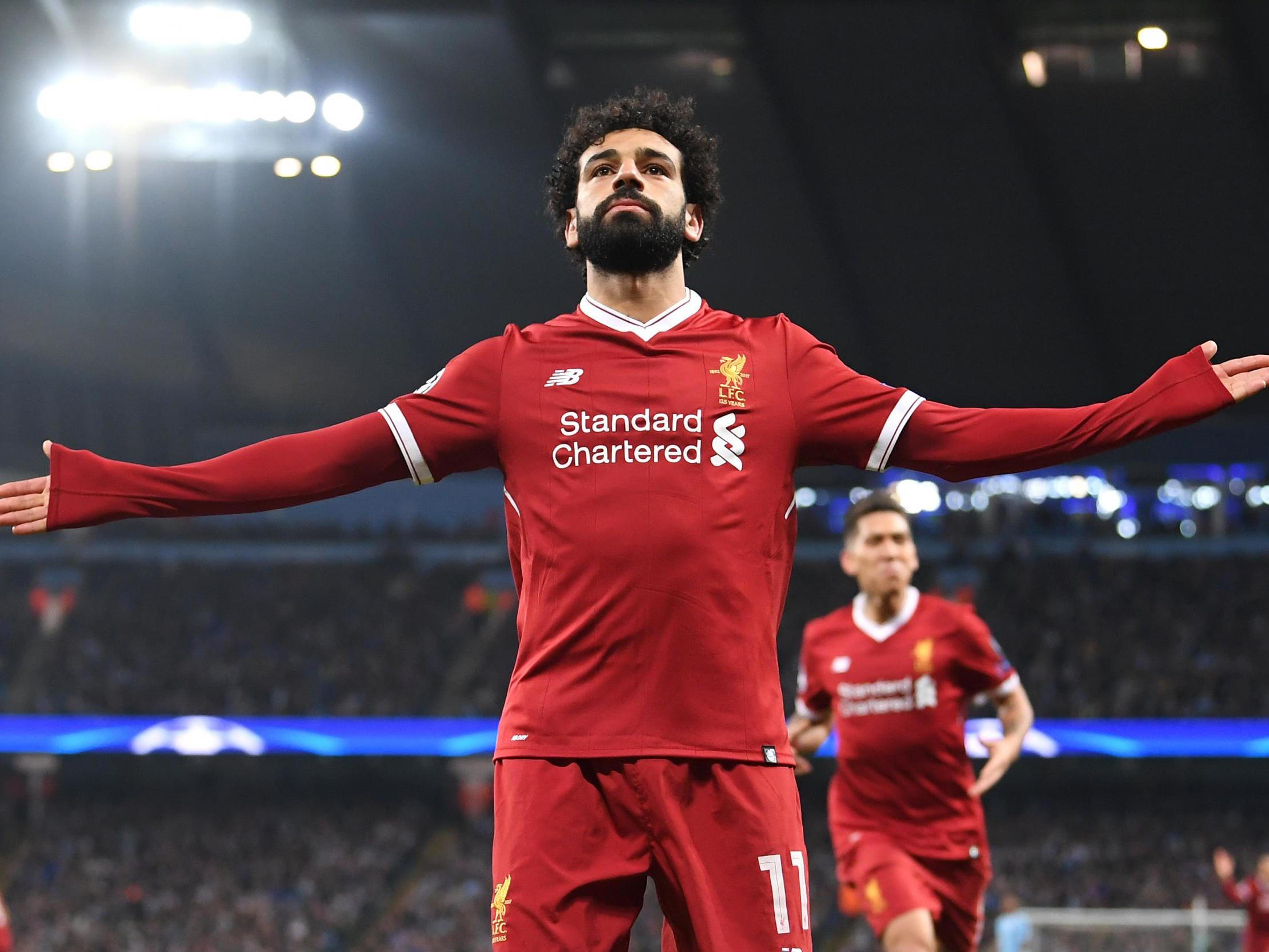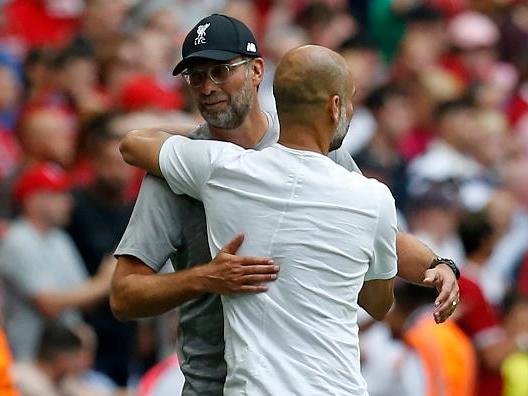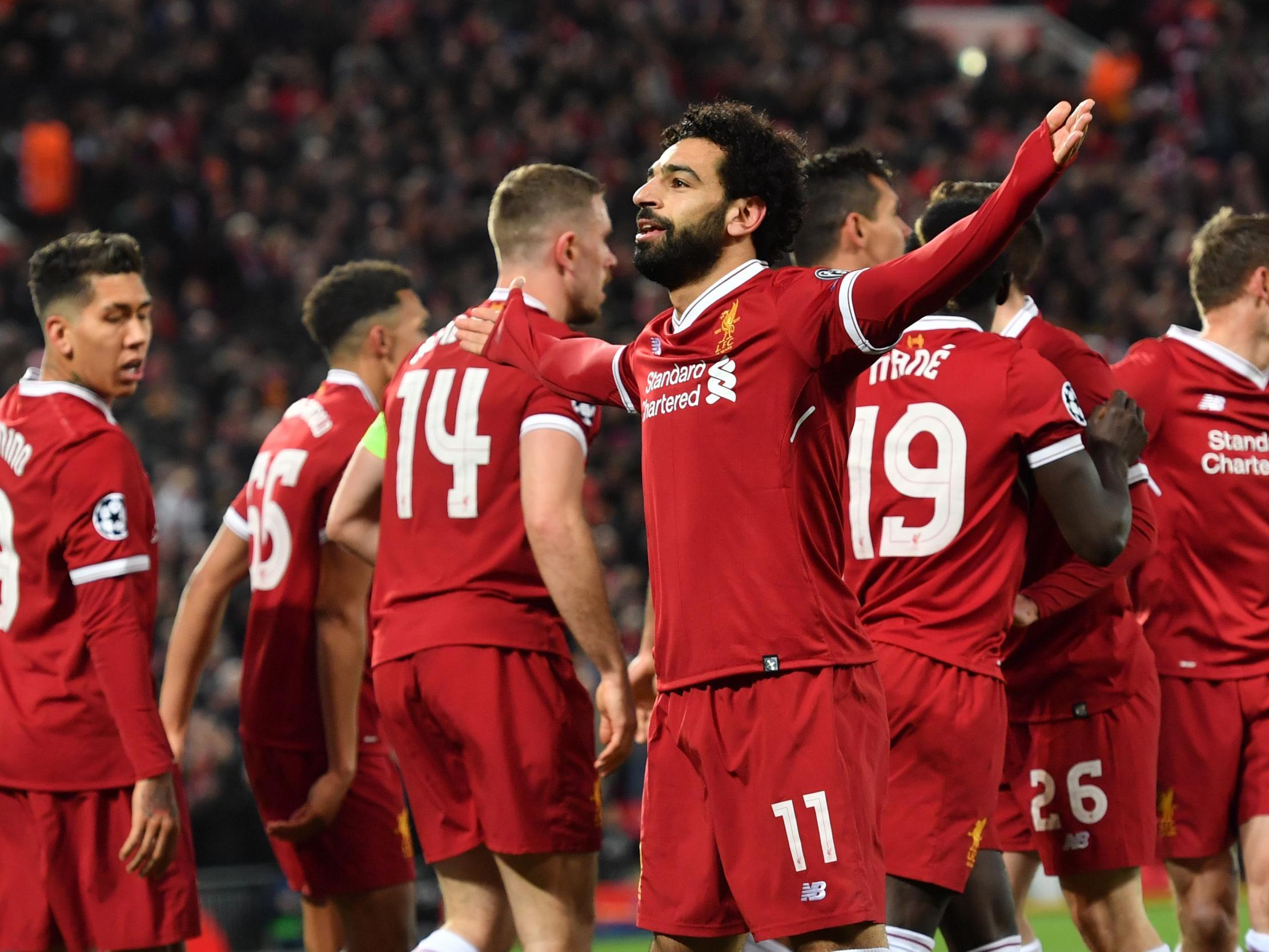Liverpool vs Man City: The tactical evolution that will decide Premier League clash
This will be a match - probably more than any other possible pairing in the world right now - decided by transitions and the responses to those transitions

Your support helps us to tell the story
From reproductive rights to climate change to Big Tech, The Independent is on the ground when the story is developing. Whether it's investigating the financials of Elon Musk's pro-Trump PAC or producing our latest documentary, 'The A Word', which shines a light on the American women fighting for reproductive rights, we know how important it is to parse out the facts from the messaging.
At such a critical moment in US history, we need reporters on the ground. Your donation allows us to keep sending journalists to speak to both sides of the story.
The Independent is trusted by Americans across the entire political spectrum. And unlike many other quality news outlets, we choose not to lock Americans out of our reporting and analysis with paywalls. We believe quality journalism should be available to everyone, paid for by those who can afford it.
Your support makes all the difference.In the aftermath of Liverpool’s rip-roaring 2018 Champions League quarter-final win over Manchester City, Pep Guardiola was torturing himself trying to work out how his side had been so well beaten.
The first leg was a match that set many of the pieces for this current duopoly at the top of the English game and European football, and also a match where Jurgen Klopp began to set the necessary pace. Although Liverpool were at that point way behind an utterly dominant City in the league, the reality at Anfield that night was they were just so much better. Guardiola’s side were simply devastated, almost unable to live with the force of attacking football they encountered.
The manager’s solution, however, was not to concentrate on any of that.
“The reason we’ve lost is that we were not good on the ball,” Guardiola told his coaches. “If we’re better on the ball, Liverpool don’t get the transition.”
The City manager’s feeling was that they just couldn’t cope with the speed of Liverpool once the ball went free.
Guardiola is said to have become obsessed with the issue in the time since that match, and has worked hard to incorporate solutions into his side.
It has already made a difference. It may well represent the difference at Anfield on Sunday. This will be a match - probably more than any other possible pairing in the world right now - decided by transitions, and responses. Think Leroy Sane’s winning goal the last time they met in January as the prime example.
It has certainly made a difference in the game, and perhaps represents the deepest and most influential recent tactical evolution in the sport. It is the natural next step from the post-2008 Guardiola-inspired emphasis on pressing, and what it has logically given way to. That is evidenced by how Guardiola himself has taken it on, undoubtedly influenced by his time in German football and - yes - Klopp.
Chris Davies, Brendan Rodgers’ assistant at Leicester City and part of a modern breed of coaches who were initially analysts, has described “transition, or controlling transition” as the “most important part of the game now”. Most modern coaches feel the same.
It is the instance that possession is lost and a ball is free, leaving one side out of shape and disorganised, and offering a millisecond of an entirely uncontrolled game for the more forceful side to pounce.
It is consequently also the moment of nothingness that means everything. If you control the transitions, you control the game.
Much of this is itself the natural consequence of the scientific evolution within football,
“The game is so much faster now,” Davies says. “The pitches are better, balls are lighter, fitness levels are higher, and it all adds up to much greater speed.
“Teams now have the ability to get 50 yards up the pitch and into the opposition box in six seconds. They can devastate you in a way that wasn’t as possible 15 years ago. It doesn’t take long if space is there to break into. That’s why it’s such a threat. So many goals are scored in transitions.”
It’s why so many managerial teams now so focus on it.

“That’s why you get specialist coaches in possession and out of possession,” David Powderly, a coach at Brighton and Hove Albion explains. “It’s so important.”
Many modern game analysts will similarly divide passages of play into distinctive phases when analysing matches or opposition: attacking play, attacking transition, defensive play, and defensive transition.
In looking to defend from transitions, coaching staff will thereby seek to ensure any spaces are blocked off, to pre-emptively stop opposition breaking through. A lot of preparation is built around that, closing spaces that teams can attack into.
This is actually one of Liverpool’s great qualities. Many often wonder why Klopp sets up his midfield in the more functional manner he does, but that is specifically because the number-eights - usually now Fabinho and Jordan Henderson - are there to link up with the movement of the full-backs to effectively build up an guard and control the flow of the play.
“Liverpool control the channel of the ball,” Powderly says. “They play certain passes that are obviously attacking, but also hurt the opposition by preventing counter-attacks.
“You see Trent Alexander-Arnold, Andy Robertson higher up the pitch, then with the protection from Fabinho and Henderson. It locks the opposition in. Look at the game against Tottenham Hotspur. Tottenham couldn’t get out, from the way Liverpool were positioned.”
It can look chaotic, but there is an obvious control, of the space rather than the ball.
City are meanwhile more clinical about it. They seek to achieve the same effect through - of course - possession, and their positional play dictated by that. Hence Guardiola being so obsessed with being better on the ball in that 2018 defeat.
“I’ve seen it a couple of times when Manchester City are playing,” Powderly says. “They’ve just regained the ball, and they recycle it around the back. Then you’ve got [Kevin] De Bruyne and [David] Silva, they’re not even facing the play where their teammates are. They’re just dropping into position, and waiting for the ball to come.”
You can thereby understand why Guardiola gets so fixated on this. A coach whose impossible ambition is to assert total control over the entire 90 minutes of a match, he is suddenly faced with those rare moments where it is all out of his control. They have probably been the reason he has gone out of the Champions League in each elimination with City so far.
“That’s what frustrates managers,” Powderly says. They hate not being in control. That’s why the transition so key. But it can take intelligent players to cope.”
In looking to attack from transitions, then, the key is co-ordinated responses. It is triggers to run into certain spaces, to play certain passes.
You only have to look at Liverpool every week for exquisite examples of this. Because this is obviously about much more than just running fast at goal when the opportunity presents itself.
“It’s speed and power, but teams will then add details onto their counter-attacks,” Davies says. “It’s about not being in straight lines, or looking for movements that are diagonal runs, to disrupt the covering defenders.
“The ability to make the last pass - to offer the right weight of pass, the right detail on the ball, the right time - is then crucial.”
Roberto Firmino offers the best examples of those disrupting diagonal runs. David Silva offers the best examples of those weighted passes.

Players like Mohamed Salah and the unfortunately injured Leroy Sane, then, offer the best examples of the speed fundamental to all of this.
The fact Guardiola has so fully incorporated this is similarly an illustration how influential this is, as well as an illustration of the evolution of the game and his own style. His Barcelona side used to often enact “the 15-pass rule”, which was deemed the number of passes necessary for a team to get back into shape and then built an attack from their preferred formation.
City vary that much more. They are capable of just going for it in the manner of Klopp’s sides, and it has of course been influenced by Klopp.
“Pep has evolved,” Powderly says. “You see how they change it up in terms of when the time to break is, and when the time to keep hold of the ball and get into shape is. I’d be fascinated to know why the players make these decisions, and how. What is the trigger for when to suddenly break, or when to get into shape?”
That variation is also what truly elevates these two sides. Some teams - most notably Diego Simeone’s Atletico Madrid - base their entire gameplan on exploiting moments of transition. It means they don’t actively want the ball in that way. City and Liverpool, however, are just dangerous all the time.
The way they have perfected transitional play means they are now as dangerous in possession as they are out of it.
It means they are both so capable of those moments that Davies cites as the most crushing for any coach, that instance when the ball is lost and an opposition attack is suddenly bearing down on your goal in one of those devastating six-second moves.
We may see a lot of that on Sunday. We’ll also see the best proponents at actually stopping that.
That’s what so marks these teams apart, and what so marks this fixture apart.
Join our commenting forum
Join thought-provoking conversations, follow other Independent readers and see their replies
Comments